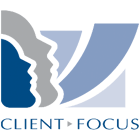Profit is virtuous.
Yes, it is.
And profit—not revenue, not headcount—is the key to everything you want in your business.
By the time this article is finished, you’ll be thinking about profit all the time. You and your insurance agency will be much better off as a result.
Why is profit virtuous?
First, it indicates that you’re more valuable to customers.
To be more profitable, you must increase income faster than costs. But as an agent, raising your price is not an option, right? So how do you increase profitability?
-
Attracting more customers because of your reputation (lower Customer Acquisition Cost)
-
Retaining them longer (higher Customer Lifetime Value)
-
Winning more of their business (also higher CLV)
All of those require you to be better in the ways that matter most to customers. (If you can find a way to get more profit without being better for customers, you might be doing something unethical.)
Second, more profit means you can treat your employees better.
You can invest in their growth and have the luxury of rewarding them more abundantly. You can outsource things that aren’t worth your staff’s time. You can staff more fully and reduce everyone’s stress and anxiety.
Third, a profitable business can afford to invest in innovation and continuous improvement.
That means you can serve customers better over time. And that leads back to being more valuable to them.
The combination of these factors creates a virtuous cycle of profitable growth. And it will be more fulfilling and satisfying than the grind.
How would more profit impact your agency?
Growth.
Profit is what you reinvest to grow. Again—not revenue, not headcount—profit.
More revenue and more headcount might be indicators that your market share is increasing. But if you’re selling widgets at cost, it doesn’t matter whether you sell a thousand or a million. You end up with exactly zero dollars.
Get this—the biggest benefit to increasing profit margins goes to low-margin businesses. For example, suppose my agency runs a 20% net margin (profit after all costs and expenses). We’ll call it $500,000 of revenue at 20% net margin = $100,000.
Now, suppose I can pull this off:
-
Increasing my average customer retention by a couple of years
-
And in doing so, generate 20% more revenue ($100,000)
-
Without incurring significant new costs
Then the extra $100,000 flows to the bottom line. That’s a 100% increase in profit!
DOUBLE!
Profit can also make you grow way faster. Think about the bottlenecks that cost you months or years of growth: being understaffed, not being able to diversify marketing and advertising, being stuck doing busy work instead of shaking hands and kissing babies…
That kind of slow go-to-market (GTM) could cost you millions of dollars over the life of your agency. Growth compounds, right? And when do you tell customers to start compounding?
Now? Yep. Speed matters.
How about this: low profits mean you have to cut corners to make ends meet. Or you have to work insanely hard to get ahead.
Profit can get you out of the grind.
Finally, a business that’s growing profits is a thriving business. It looks good. The way your customers and employees perceive your business will change if it’s very profitable.
Should I focus on profit or profit margin?
Profit is measured in dollars. Profit margin is measured in percent.
You get profit dollars by subtracting all of your expenses and costs from Revenue. Your income statement (or “P&L”) probably refers to this as “Net Income”.
You calculate profit margin (a.k.a. ”net margin”) by dividing Net Income by Revenue.
Example:
-
Your total commissions, bonuses, incentives, etc. is $500,000.
-
Your total expenses and costs are $400,000.
-
Profit (Net Income) = $500,000 – $400,000 = $100,000.
-
Profit Margin (Net Margin) = $100,000 / $500,000 = $20%.
Now, if the profit margin stays the same, but the revenue goes up, that’s more profit dollars. That’s good.
If revenue stays the same, but the profit margin goes up, that’s also more profit dollars. That’s also good.
But if both go up? Your income will explode in a way you never imagined. And your life will be way better.
What’s the best way to grow profit?
Let’s start with the worst way: cutting costs.
Every business should always be careful with its treasure. Wasting money in any economy makes you a silly goose.
But trying to save money in ways that reduce employee morale or that are off-putting to customers and prospects is also not smart. It’s killing the goose that lays the golden eggs.
So what should you do?
Widen the gap between Customer Acquisition Cost and Customer Lifetime Value.
Referrals and word of mouth naturally lower your Customer Acquisition Cost, making you more profitable. That’s fantastic.
But lowering CAC by hook or by crook shouldn’t be your primary goal. That’s a weak game.
The strong game is spending more to make a lot more. If CAC goes up 20% and CLV goes up 50%, you’re way better off than if you cut CAC 20% to make the same CLV.
And to increase Customer Lifetime Value, invest in improving customer loyalty and retention so that each sale makes you more years of commissions. This is the most obvious opportunity that most agencies fail to commit to, and it’s worth a fortune.
Watch this:
-
A $200 annual commission for 4 years ($800) minus a $300 CAC leaves you with $500 CLV. That’s a 166% ROI.
-
Add 2 years, and it’s a 300% ROI
-
Stretch it to 10 years, and it’s a 566% ROI.
-
Along the way, if they give you more of their business, maybe it’s an 800% or 1000% ROI.
With that kind of ROI, you can afford to increase your sales and marketing spend to win more of your Ideal Customer Profile.
That’s what profit-oriented businesses call a “no-brainer.”
Niche down.
While I wouldn’t suggest that you turn away business, you do have to decide where to focus your go-to-market efforts.
Most agents base this decision on the type of marketing activity, the lead source, etc.
Why not base it on the customers with the best balance of annual commissions times years of retention? Imagine if you had a strategy for that group of wonderful people!
If you can figure out the intersection of your ideal customer profile AND your ideal niche market, you’ll be virtually impossible to compete with.
Win more of each customer’s business for more years.
Your optimal CAC and highest CLV come from meeting with your customers, building trust, winning more business, and earning their loyalty.
You have to be meeting your customers and building loyalty.
(”Sounds like the Client Focus guy is evangelizing appointments.”) Fine, but it’s still true. If you aren’t meeting with customers, you’re losing margin and dollars. Maybe a lot.
Bob Burg wasn’t naive when he said, “All things being equal, people will do business with, and refer business to, those people they know, like, and trust.”
Do your customers know you? Do they like you? Do they trust you? The answer to that question directly correlates to your profitability. Hard stop.
This article content comes from BPC partner Client Focus. To read the original article, visit their website.






.png)





